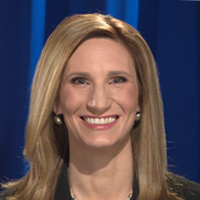Ready to Retire? Not Until You've Done These 3 Things
To protect yourself from surprises, here are three steps to take, starting at 10 years before retirement, five years before and finally one year before.


One of the biggest threats to your financial security isn’t the markets, interest rates or even your job security. It’s a lack of preparation, particularly for unexpected events, that usually leaves investors reeling when markets swoon. If you haven’t protected yourself from the potential downsides in life, after all, then it’s difficult to maneuver when the unforeseen strikes.
Some recent numbers from the Employee Benefit Research Institute’s Retirement Confidence Survey showcase this lack of preparation in action during retirement planning. According to the annual survey, 66% of those 55 years and older said they were confident that they had enough money to live comfortably throughout retirement. But 48% within the same age group have not calculated their retirement needs.
Understanding where you stand now and knowing what you’ll need and want in retirement are vital to protect your portfolio throughout your post-work life. If you plan on retiring at 65, then age 55 is when you will want to begin making some important decisions.
From just $107.88 $24.99 for Kiplinger Personal Finance
Become a smarter, better informed investor. Subscribe from just $107.88 $24.99, plus get up to 4 Special Issues

Sign up for Kiplinger’s Free Newsletters
Profit and prosper with the best of expert advice on investing, taxes, retirement, personal finance and more - straight to your e-mail.
Profit and prosper with the best of expert advice - straight to your e-mail.
Here are three steps to take in your last decade of your working years to help weave a safety net for a long retirement.
At 10 Years or More Out: Diversify Your Tax Exposure
If you’ve worked at various organizations throughout your career, then you likely have a large portion of your portfolio in an employer sponsored 401(k) or in various IRAs. These tax-deferred accounts provide plenty of benefits now, because you’re not taxed on the contributions. At age 50 and older, you can take advantage of catch-up contributions, allowing you to set aside a total of $26,000 in 2020 in your 401(k) each year. Since you’re likely to pay a lower tax rate in retirement, when you start taking taxable withdrawals, it provides a nice tax advantage today.
But in the years leading into your retirement, you should consider also building assets in tax-free accounts. The reason? Flexibility, so you can keep tax costs down in retirement.
Having assets in a Roth IRA or a Roth account within your 401(k) can give you a source of tax-free income in retirement. You can save into a Roth IRA as long as your income doesn’t exceed the income limits. For a married couple filing jointly, in 2020 you can only make a full contribution if your modified adjusted gross income is below $196,000. Contribution limits start phasing out above that point, and above $206,000 you cannot contribute at all. For singles, the ability to contribute starts phasing out at $124,000, and contributions are prohibited at incomes above $139,000.
You’re taxed on the money you place into a Roth, it grows tax-free and withdrawals after age 59½ are income tax free. If you’re over 50, then you can add up to $7,000 into the account in 2020.
If your income is above the Roth IRA contribution threshold, you can consider making contributions to the Roth option within your 401(k) if your plan offers one. You can also consider converting some or all of your traditional IRA accounts into a Roth IRA — paying some taxes now, but allowing future tax-deferred growth and a source of tax-free income during retirement.
In retirement, this mix of the untaxed Roth IRA withdrawals and the taxed 401(k) distributions will allow you to have more control over your total tax payment.
At 5 Years Out: Make A Health Care Plan
One of the largest costs you’ll have in retirement will likely be health care. The Center for Retirement Research at Boston College calculates that the average retiree will spend nearly $4,300 a year throughout retirement on out-of-pocket health care costs. That doesn’t include the expense of long-term care, which surpasses $172,000 on average over a lifetime.
You’ll want to have a plan in place for both of these expenses. Taking advantage of a health savings account if you’re in a high-deductible health insurance plan is a good way to save for the out-of-pocket health care expenses that won’t be covered by Medicare or your private health insurance. You can fund this up to $7,100 for families ($8,100 if you’re 55 or older). Your contributions are made on a pre-tax basis, your account grows tax free, and withdrawals are tax- and penalty-free if used for qualified health care expenses.
Five years out is also when, if you believe you want long-term care insurance, you should consider purchasing it. Even a plan with just a minimal level of coverage for a 60-year-old costs 30% less, on average, than buying the same plan at age 65.
At 1 Year Out: Spend Like You're Retired
In many areas of life, practice makes perfect. The same goes for retirement.
One popular rule is to save enough in your retirement portfolio to take 4% out each year along with Social Security benefits to cover your retirement living expenses. The 4% rule is great for high-level planning purposes, but life is more complicated than a simple rule of thumb. A financial planner can help you develop a more customized approach for your situation.
In the year before stepping away from work, make sure you can live comfortably when spending that average yearly amount. If you’re still saving, don’t include that amount in the estimate. You want to make sure you’re not feeling stressed by the amount you can spend on daily life expenses.
If that level of spending feels tight, then you can rethink your retirement and investment strategy with your planner. Another option is to work a little longer or take a part-time job once you retire.
This retirement spending dress rehearsal can help you know what to expect, instead of having a big surprise in retirement.
You can’t predict the future, but you may be able to limit the impact of shocks to your nest egg. Adding in these layers of protection at least 10 years before you step away from the workforce, may help you secure your retirement goals.
Investment advisory products and services are made available through Ameriprise Financial Services Inc., a registered investment adviser. Ameriprise Financial Services Inc. Member FINRA and SIPC.
A Roth IRA is tax-free as long as investors leave the money in the account for at least five years and are 59½ or older when they take distributions or meet another qualifying event, such as death, disability or purchase of a first home.
Ameriprise Financial and its affiliates do not offer tax or legal advice. Consumers should consult with their tax adviser or attorney regarding their specific situation.
Profit and prosper with the best of Kiplinger's advice on investing, taxes, retirement, personal finance and much more. Delivered daily. Enter your email in the box and click Sign Me Up.

Marcy Keckler is the Senior Vice President, Financial Advice Strategy and Marketing at Ameriprise Financial. She leads the overall strategy for financial advice at the firm, including the Ameriprise Client Experience and Confident Retirement programs. Marcy has been with Ameriprise Financial (formerly American Express Financial Advisors) for more than 25 years in a variety of positions in financial planning, marketing and interactive development.
-
 Quiz: Do You Really Know How Social Security Benefits Are Taxed?
Quiz: Do You Really Know How Social Security Benefits Are Taxed?Quiz Social Security benefits often come with confusing IRS tax rules that can trip up financially savvy retirees and near-retirees.
-
 Are You Ready for 65? The Medicare Initial Enrollment Period Quiz
Are You Ready for 65? The Medicare Initial Enrollment Period QuizQuiz Turning 65 soon? Test your basic knowledge of Medicare's Initial Enrollment Period (IEP) rules in our quick quiz.
-
 3 Ways to Stretch the 2026 Social Security COLA For Your Budget
3 Ways to Stretch the 2026 Social Security COLA For Your BudgetThree steps retirees can take to stretch the Social Security COLA to fit their budgets.
-
 Giving Tuesday Is Just the Start: An Expert Guide to Keeping Your Charitable Giving Momentum Going All Year
Giving Tuesday Is Just the Start: An Expert Guide to Keeping Your Charitable Giving Momentum Going All YearInstead of treating charity like a year-end rush for tax breaks, consider using smart tools like DAFs and recurring grants for maximum impact all the year.
-
 Uber Takes Aim at the Bottom Lines of Billboard Personal Injury Lawyers
Uber Takes Aim at the Bottom Lines of Billboard Personal Injury LawyersUber has filed lawsuits and proposed a ballot initiative, in California, to curb settlements it claims are falsely inflated by some personal injury lawyers.
-
 A Financial Adviser's Health Journey Shows How the 'Pink Tax' Costs Women
A Financial Adviser's Health Journey Shows How the 'Pink Tax' Costs WomenFact: Women pay significantly more for health care over their lifetimes. But there are some things we can do to protect our health and our financial security.
-
 I'm a Cross-Border Financial Adviser: 5 Things I Wish Americans Knew About Taxes Before Moving to Portugal
I'm a Cross-Border Financial Adviser: 5 Things I Wish Americans Knew About Taxes Before Moving to PortugalMoving to Portugal might not be the clean financial break you expect due to U.S. tax obligations, foreign investment risks, lower investment yields and more.
-
 Show of Hands: Who Hates Taxes? The Best Time to Plan for Them Is Right Now
Show of Hands: Who Hates Taxes? The Best Time to Plan for Them Is Right NowBy creating a tax plan, you can keep more of what you've earned and give less to Uncle Sam. Here's how you can follow the rules and pay only your fair share.
-
 'Smart' Estate Planning Can Cause Huge Problems: An Expert Unravels Popular Myths
'Smart' Estate Planning Can Cause Huge Problems: An Expert Unravels Popular MythsSometimes no plan at all could be better than making these unfortunate mistakes. Don't let your best intentions mess things up for your heirs.
-
 I'm a Financial Literacy Expert: Bubble-Wrapping Our Kids Robbed Them of Resilience. Now What?
I'm a Financial Literacy Expert: Bubble-Wrapping Our Kids Robbed Them of Resilience. Now What?By raising them to think they're amazing no matter what and lifting them over obstacles, we left them unprepared to work in the real world.
-
 I'm a Financial Planner: If You're a High Earner, You Need an 18-Month Safety Net
I'm a Financial Planner: If You're a High Earner, You Need an 18-Month Safety NetNo job seems to be safe in this age of AI. If you make a larger-than-usual salary, then you need to have a larger-than-usual emergency fund. Here's why.